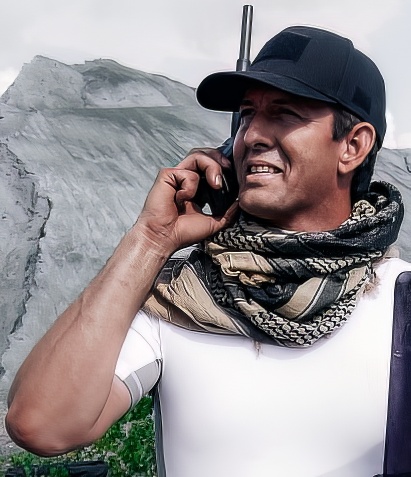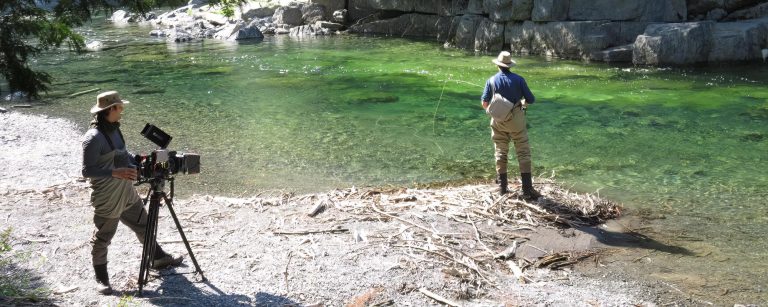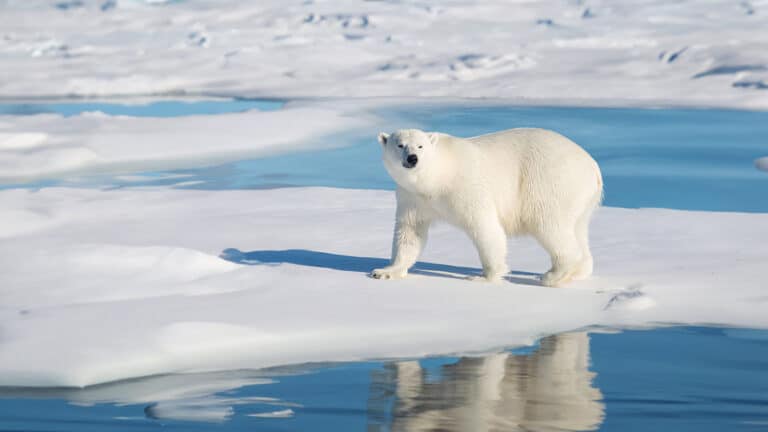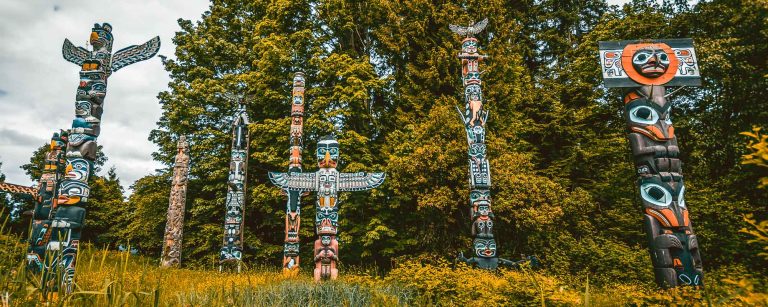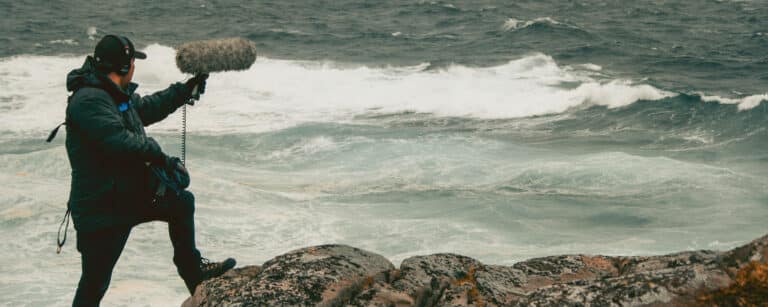When shooting in a remote location, what years of experience have taught us.
Years of experience shooting in remote locations have taught me the importance of thorough planning, reliable equipment, and effective communication. I bring this wealth of knowledge to every project, ensuring a smooth and successful shoot for my clients. This is just a small glimpse of what I have learned and the value I bring to any production shooting in a remote location.
Have a plan in place for emergency evacuation and communication, in case of accidents or injuries.
It is essential that we always have a plan in place for emergency evacuation and communication in case of accidents or injuries, especially when working in remote filming locations. This means ensuring that we have proper safety equipment and first aid kits on hand, as well as having designated evacuation routes and emergency contact information readily available for all crew members. Additionally, we should regularly conduct emergency drills and rehearsals to ensure that everyone knows how to respond in case of an emergency situation. In short, having a well-prepared emergency plan in place can be the difference between a minor incident and a major disaster on set.
Have a comprehensive safety kit and equipment on hand, including first aid supplies, emergency signaling devices, and appropriate gear for extreme weather conditions, to ensure that the crew is prepared for any situation that may arise while filming in remote locations.
As a Professional film fixer and production manager, it is crucial that my team have a comprehensive safety kit and equipment on hand at all times when filming in remote locations. This includes having a well-stocked first aid kit that includes items such as bandages, gauze, antiseptic wipes, and pain relievers for minor injuries. It is also important to have emergency signaling devices, such as flares or a satellite phone, in case of emergency. Additionally, it is essential to have appropriate gear for extreme weather conditions, such as warm clothing and waterproof gear, to ensure that the crew is prepared for any situation that may arise.
In addition to these standard safety measures, it is also important to be prepared for potential animal dangers that may be present in remote locations. This includes having bear spray and knowledge of how to use it in case of a bear encounter, as well as snake bite kits and knowledge of how to treat snake bites.
Furthermore, we also recommend to carry a trauma kit which include tourniquets, chest seals, combat gauze and other items to treat major injuries. This can be crucial in case of an emergency when professional medical assistance is not immediately available.
Overall, having a comprehensive safety kit and equipment on hand, as well as a plan in place for emergency evacuation and communication, is essential for ensuring the safety of the crew while filming in remote locations. It is important to always be prepared for any situation that may arise and to have the necessary tools and knowledge to respond effectively.
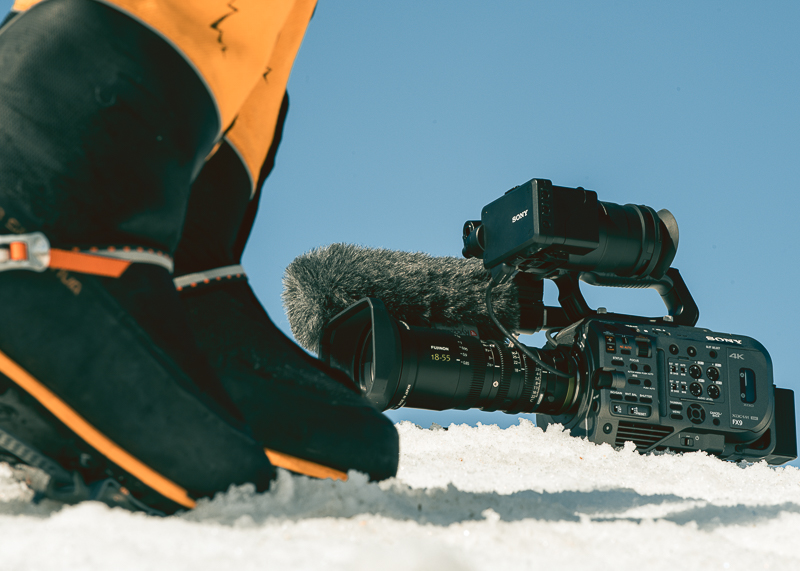
Have a detailed plan for dealing with cultural and language barriers, if any, in order to ensure smooth communication and cooperation with local communities and authorities.
One of the key elements to consider when filming in a remote location is how to effectively navigate cultural and language barriers. Whether we are producing a documentary or a feature film, it is important to have a detailed plan in place for dealing with these potential challenges in order to ensure smooth communication and cooperation with local communities and authorities.
One of the first things we do is research the culture and customs of the area where we will be filming. This includes learning about the local language, as well as understanding the customs and traditions of the community. This can help us to avoid any potential misunderstandings or cultural faux pas that could disrupt the filming process.
Another important aspect of dealing with cultural and language barriers is to ensure that our crew is culturally sensitive and aware. We make sure that our team is trained on cultural competency and is equipped with the knowledge and skills necessary to navigate these challenges.
We also make sure to have a translator or interpreter on the team when necessary, in order to facilitate clear and effective communication with local communities and authorities. This can be especially important when dealing with legal and administrative matters, such as obtaining permits and permissions for filming in certain areas.
By being proactive and having a detailed plan in place for dealing with cultural and language barriers, we can ensure that our filming process runs smoothly, and that we are able to effectively capture the stories and perspectives of local communities and authorities. This is also crucial for building trust and positive relationship with the people who live in the area we are filming in.
Have a detailed plan for dealing with the logistics of filming in remote locations, such as obtaining permits, coordinating with local authorities, and ensuring that all necessary equipment and supplies are readily available.
I cannot stress enough the importance of having a detailed plan for dealing with the logistics of filming in remote locations. When filming in remote areas, obtaining the necessary permits and coordinating with local authorities is crucial in order to ensure that the production runs smoothly and without any legal complications.
One of the first things to consider when planning to film in a remote location is the availability of local authorities. It is important to reach out to the local police department, fire department, and any other relevant authorities in order to inform them of your filming plans and to ensure that they are aware of your presence in the area. This can help to avoid any misunderstandings or potential conflicts during filming.
Another important aspect to consider when planning to film in a remote location is the availability of transportation and equipment. It is important to ensure that all necessary equipment and supplies are readily available and that transportation is arranged for getting crew and equipment to the location. This can include renting a helicopter or small plane to reach remote locations or even renting a boat to reach an island.
Another important aspect is to have a plan for dealing with the logistics of blocking street or renting fences to protect the set. This is particularly important if you are filming in a busy area and need to close off a street or block off a section of a park. It’s necessary to work with the local authorities to secure the necessary permits and permissions to do so.
In conclusion, when filming in remote locations, it is important to have a detailed plan in place for dealing with logistics such as obtaining permits, coordinating with local authorities, and ensuring that all necessary equipment and supplies are readily available. This will help to ensure that the production runs smoothly and without any legal complications.
Provide additional equipment, such as extra cameras and wireless microphone capsules, to ensure that any technical problems can be quickly and easily solved in remote and harsh weather conditions.
As a professional filmmaker, I always make sure to provide additional equipment when filming in remote locations. This includes extra cameras, wireless microphone capsules, and backup batteries. In Canada, the weather can be extremely harsh, especially during different seasons. It’s important to be prepared for anything, from snowstorms in the winter to rain and high winds in the spring and fall. Having extra equipment on hand ensures that any technical problems can be quickly and easily solved, without disrupting the shoot. Additionally, we also make sure to have weather-proof cases for our equipment and backup power sources, such as portable solar panels, to ensure that we can continue filming even in the most challenging conditions.
As filmmakers, it is essential that we have a detailed plan in place for dealing with unexpected issues that may arise during filming, such as bad weather, equipment failures, or other unforeseen problems.
This is especially important when filming in Canada, where the weather can be unpredictable and extreme, ranging from arctic conditions to coastal locations. Climate change has also made the weather more unpredictable, so we must be prepared for anything.
When filming in high mountain areas, it’s important to have the appropriate equipment such as crampons, ice axes, and other technical gear. In addition, having the right clothing is crucial. Electric jacket, undergarments, multi-layered clothing, and spike for your boots are all must-have items to keep you warm and safe in harsh conditions. And remember, it’s not a fashion show when safety is at stake and when you are working with very expensive equipment. Always choose the best shoes or boots for the job, not just because they look good.
By having a detailed plan in place and being prepared for any situation, we can ensure the safety and success of our filming projects.
Have a reliable and efficient system for communication among the crew to ensure that everyone is aware of the schedule, location, and goals of the production at all times.
As a filmmaker, one of the most important things to consider when filming in remote locations, especially in Canada, is having a reliable and efficient system for communication among the crew. This is crucial to ensure that everyone is aware of the schedule, location, and goals of the production at all times. This means that everyone should have access to the same information and be able to communicate with each other easily, whether it is through radios, walkie-talkies, or other forms of communication.
But it’s not just about the schedule, location, and goals of the production, it’s also important for the crew to have an easy way to reach the producer if they need to adapt the script or make changes to the planned shots. This is especially important when filming in remote locations, where unexpected issues may arise and require quick decisions to be made. This could be weather-related issues, equipment failure or other unforeseen problems, that could affect the production.
Having a reliable and efficient system for communication among the crew will ensure that everyone is aware of the schedule, location, and goals of the production at all times and that everyone can quickly reach the producer if something needs to be changed. This is the key to ensuring a smooth and successful production in any remote location, including Canada.
Regularly check and maintain equipment to ensure that it is in good working condition and ready for use at all times.
When filming in remote locations in Canada, it is essential to have a reliable and efficient system for maintaining equipment. This includes regularly checking and cleaning equipment to ensure that it is in good working condition and ready for use at all times. The different climates in Canada can be harsh, so it is important to take the necessary steps to protect equipment from extreme temperatures, humidity, and other weather conditions.
As the leader of the team, I recommend that everyone on the crew has a basic knowledge of how to maintain and care for the equipment. This includes cleaning the equipment after each use, protecting it when not in use, and knowing how to troubleshoot and fix any minor issues that may arise. It is important to also have a designated person responsible for equipment maintenance, and have a schedule to check and maintain the equipment.
It is also important to have backup equipment on hand, in case of equipment failure or other unforeseen problems. This will ensure that the production can continue without interruption, and that the crew can continue working safely and efficiently.
By following these steps, we can ensure that our equipment is ready for use at all times, and that we are able to work in all climates in Canada. Remember that taking care of our equipment is crucial for the success of the production, and that it is not only a financial investment but also a safety one.
Have a detailed plan for data management and backup solutions to ensure that footage and data are safe and secure.
One of the most important things to consider when filming in remote locations, such as in Canada, is data management and backup solutions. It is essential to have a detailed plan in place to ensure that all footage and data are safe and secure at all times.
I recommend having multiple redundancy backup solutions, such as sending footage to a secure location on a regular basis and having extra recording media on hand, including extra card readers and transfer cables. It’s important to also perform regular tests on your recording devices and cards to make sure they are working properly, to avoid any potential data loss.
Furthermore, it’s important to have enough recording media, such as cards or hard drives, as not having enough could stop your production for days. It’s also important to have a basic knowledge of how to maintain your equipment and how to clean it, and protect it when it’s not in use.
In conclusion, having a solid data management and backup plan in place when filming in remote locations is crucial to ensure the safety and security of your footage and data. It’s a key aspect of the production that should not be overlooked, and it’s essential to be prepared for unexpected issues that may arise during filming.
Have a detailed plan for power supply and backup solutions to ensure that equipment can be powered and operated in remote locations.
It is important to have a detailed plan for power supply and solutions when filming in remote locations in Canada where the conditions can make it challenging to power and operate equipment. Therefore, it is essential to have a reliable power supply plan in place.
One solution is to have a generator on hand. While generators can provide a reliable source of power, it is important to remember to always have enough fuel and the necessary maintenance supplies, such as spark plugs and oil, to ensure the generator runs smoothly. Additionally, when filming in remote locations, it is important to be aware of the distance between towns as it can be quite large in Canada, and plan accordingly.
Another solution is to use solar panels to recharge equipment. More and more safety equipment can be recharged with solar panels, which can be a great option in remote locations where power sources may be limited. It is also important to have backup power solutions in case of equipment failure or unexpected power outages.
Overall, it is crucial to have a detailed power supply plan in place when filming in remote locations in Canada. By being prepared and having backup solutions, you can ensure that your equipment is powered and operated smoothly, allowing you to focus on capturing the perfect shot.
Have a detailed plan for transportation, accommodation, and communication for the crew to ensure smooth operation of the production.
I cannot stress enough the importance of having a detailed plan for transportation, accommodation, and communication for the crew when filming in remote locations in Canada. As you know, Canada is a vast country with diverse landscapes and environments, and it’s crucial to be prepared for any situation that may arise.
When it comes to transportation, it’s essential to have a reliable fleet of vehicles that can handle the rugged terrain and long distances that we may encounter while filming in remote locations. Additionally, it’s essential to have a plan in place for fuel and maintenance, as well as emergency vehicle repairs.
Accommodation is another crucial aspect to consider. In southern Canada, there is an abundance of hotels, motels, and bed and breakfasts. However, as we move further north, the options may become more limited. It’s crucial to plan in advance and have a backup plan for accommodation in case of unexpected closures or overbookings. Working with a company like Films.Solutions can ensure that you have a safe and comfortable place to stay while you’re on location.
Finally, communication is key when it comes to filming in remote locations. It’s essential to have a reliable and efficient system for communication among the crew to ensure that everyone is aware of the schedule, location, and goals of the production at all times.
In conclusion, filming in remote locations in Canada requires a great deal of planning and preparation. By having a detailed plan for transportation, accommodation, and communication, we can ensure that our production runs smoothly and safely, no matter what challenges we may face.
Provide insurance and production vehicles to ensure the safety of the crew and equipment during travel and filming in remote locations
It’s important to have a detailed plan in place for the safety and security of our crew and equipment. When filming in remote locations in Canada, one key aspect of this plan is providing insurance and production vehicles.
First and foremost, having insurance is crucial in case of any accidents or equipment failures. Not only does it allow us to replace damaged equipment, but it also ensures that we have access to replacement equipment quickly and efficiently. At Films.Solutions, we have a vast network of equipment providers throughout Canada to make sure that the shooting can continue even when we are far away from major film production cities.
In addition to insurance, it’s also important to have reliable and safe production vehicles for the crew and equipment. This is especially important when filming in remote locations, as the terrain and road conditions can be unpredictable and challenging. Having the right vehicles, such as 4x4s or vans, can ensure that the crew and equipment can reach the filming location safely and without delay.
In summary, providing insurance and production vehicles is a crucial part of having a detailed plan for the safety and security of our crew and equipment when filming in remote locations in Canada. At Films.Solutions, we make sure that these aspects are taken care of, so that the focus can be on making great films.
Conduct camera tests and present shooting protocols to the production team in order to ensure compatibility of formats and efficiency of protocols.
As a professional in the film industry, I understand the importance of conducting camera tests and presenting shooting protocols to the production team. This is especially important when filming in remote locations in Canada, where unexpected issues may arise. At Films.Solutions, we take the time to ensure compatibility of formats and efficiency of protocols.
We understand that clients come from all around the world and may use different recording formats, frame rates, etc. To ensure compatibility, we conduct camera tests in some of the largest facilities in Canada. This allows us to identify and address any potential issues before they occur on set.
Efficiency is also a top priority for us. By presenting clear and detailed shooting protocols to the production team, we can minimize any delays or disruptions during filming. This helps us to stay on schedule and within budget, while also providing the best quality footage for our clients.
Overall, we believe that conducting camera tests and presenting shooting protocols are essential to ensuring a successful and smooth production, even in remote locations in Canada. We take the necessary steps to ensure compatibility of formats and efficiency of protocols, and we make sure to have the best equipment possible to provide the best results for our clients.

